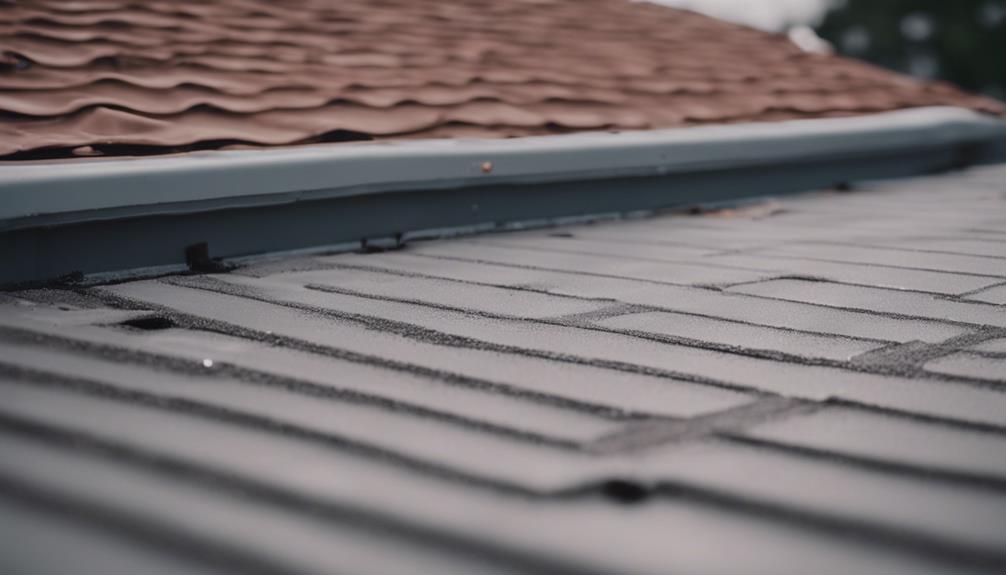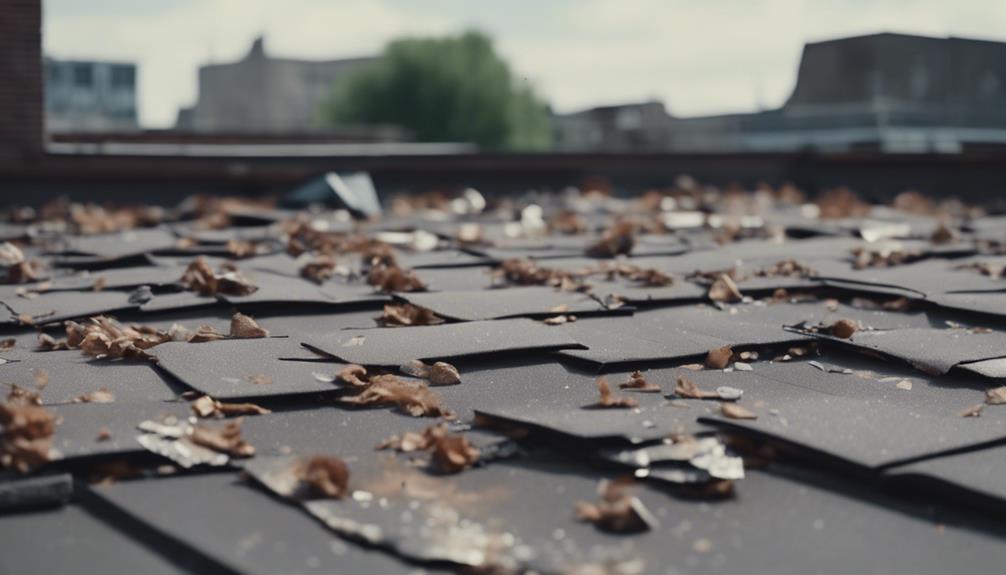How Long Does A Flat Roof Last?
The longevity of flat roofing is an important aspect that demands careful attention from property owners and industry professionals alike. A flat roof constructed correctly can endure 20 to 50 years.
The lifespan of a flat roof is not solely determined by the quality of materials used but involves a complex interplay of various factors. Understanding these considerations can have a substantial impact on the overall performance and durability of a flat roof, ultimately affecting maintenance costs and the structural integrity of the building.
What are the Lifespan Considerations for Flat Roofing Materials?
Examining the longevity of flat roofing materials is essential in determining the most suitable option for a durable and cost-effective roofing solution. Flat roofs are commonly used in commercial and industrial buildings due to their practicality and ease of maintenance.
Various materials are used in flat roofing, each with different longevity expectations. For instance, built-up roofing (BUR) systems, consisting of multiple layers of asphalt and reinforcing fabrics, can last up to 30 years with proper maintenance.
In addition to the material itself, proper installation, regular inspections, and timely repairs play a vital role in maximizing the longevity of flat roofing systems. By considering these factors, building owners can select the most appropriate roofing material that aligns with their budget and performance expectations.
How Long Do Different Kinds of Flat Roofs Last?
The lifespan of a flat roof depends on the materials used, the quality of installation, and the level of maintenance. Here’s a list based on different roofing materials:
1. Built-Up Roof (BUR): BUR systems, made of multiple layers of bitumen and reinforcing fabrics, typically last 15 to 20 years. With proper maintenance, they can sometimes reach up to 30 years.
2. Modified Bitumen: Modified bitumen roofs, which are similar to BUR but use asphalt-based materials, usually have a lifespan of 20 to 25 years.
3. EPDM (Ethylene Propylene Diene Monomer): EPDM rubber roofs are known for their durability and can last 25 to 30 years. High-quality installations and regular maintenance can extend their lifespan even further.
4. PVC (Polyvinyl Chloride): PVC roofing systems offer excellent durability and can last 20 to 30 years. They are resistant to chemicals and fire, which can contribute to their longevity.
5. TPO (Thermoplastic Olefin): TPO roofs, which are similar to PVC but often more cost-effective, generally last 15 to 25 years. Their lifespan can be extended with proper maintenance and high-quality materials.
6. Spray Polyurethane Foam (SPF): SPF roofing systems, which involve spraying foam insulation that expands and hardens, can last 20 to 30 years. Regular maintenance, such as re-coating, is crucial for extending their lifespan.
What Are the Primary Factors Influencing Flat Roof Longevity?
Factors affecting the lifespan of flat roofs are important considerations in ensuring the longevity and performance of roofing systems. Various factors can influence how long a flat roof will last and how well it will withstand environmental stressors. Here are four key factors to take into account:
- Roofing Material: The type of material used for the flat roof has a substantial impact on its longevity. Materials like EPDM rubber, TPO, PVC, and modified bitumen have different lifespans based on their durability and resistance to weathering.
- Installation Quality: Proper installation by experienced professionals is essential for the longevity of a flat roof. Poor installation can lead to premature failures and reduced lifespan.
- Maintenance: Regular maintenance, such as inspections, cleaning, and repairs, can prolong the lifespan of a flat roof by addressing issues before they escalate.
- Climate and Environmental Conditions: Factors like sunlight exposure, temperature fluctuations, precipitation, and air pollutants can influence the lifespan of a flat roof. Understanding how these elements impact the roof can help in choosing the right materials and maintenance practices to enhance longevity.
What Maintenance Practices Should Be Followed to Ensure a Longer Lifespan for Flat Roofing?

To maximize the longevity of a flat roof, implementing diligent and proactive maintenance practices is crucial. Regular maintenance not only helps extend the lifespan of the roof but also guarantees that any potential issues are identified and addressed promptly, preventing costly repairs or premature replacement. Here are some key maintenance practices that can help in extending the lifespan of flat roofing systems:
| Maintenance Practice | Description |
|---|---|
| Regular Inspections | Conduct thorough inspections at least twice a year to check for any signs of damage, leaks, or deterioration. |
| Clearing Debris | Remove debris such as leaves, branches, and dirt to prevent water ponding and the growth of mould or algae. |
| Checking Seals and Joints | Inspect seals and joints for any signs of wear or damage and reseal them as needed to prevent water infiltration. |
| Cleaning Drains and Gutters | Make sure that drains and gutters are clear of debris to allow proper water drainage and prevent water backup. |
| UV Protection | Apply UV protective coatings to shield the roof from the damaging effects of the sun and prolong its lifespan. |
How Can Property Owners Maintain the Durability of Flat Roofs?

The longevity and resilience of flat roofing systems are critical aspects that property owners must prioritize for prime performance and cost-effectiveness over time. Durability in flat roofs is influenced by various factors such as the quality of materials used, proper installation techniques, regular maintenance, and climate conditions.
Property owners should opt for high-quality materials like EPDM rubber, TPO, PVC, or built-up roofing systems to enhance durability. These materials offer excellent resistance to UV rays, weathering, and punctures, prolonging the roof’s lifespan. Additionally, ensuring correct installation by experienced professionals is essential to prevent premature roof failure.
Regular inspections and maintenance play an essential role in preserving the durability of flat roofs. Property owners should schedule routine inspections to identify and address any issues promptly, preventing minor problems from escalating into major damage.
Conducting maintenance tasks like clearing debris, inspecting for leaks, and ensuring proper drainage can greatly extend the roof’s durability. By following these guidelines, property owners can maximize the lifespan of their flat roofing system while minimizing repair costs.
Frequently Asked Questions
Can Solar Panels Be Installed on Flat Roofs Without Affecting Their Lifespan?
Solar panels can be installed on flat roofs without significant negative effects on their lifespan if proper installation methods are followed. It is crucial to take into account factors such as weight distribution, waterproofing, and maintenance to guarantee longevity.
Are There Any Specific Insurance Considerations for Flat Roofs With Regard to Their Lifespan?
Insurance considerations for flat roofs vary with lifespan. Policies may be impacted by age, maintenance, and material type. Regular inspections, proper maintenance, and documentation of repairs can mitigate risks and guarantee coverage for potential issues.
What Are the Potential Environmental Impacts of Different Flat Roofing Materials on Their Longevity?
Different flat roofing materials have varying environmental impacts affecting longevity. Factors like UV resistance, thermal expansion, and moisture absorption influence durability. Considerations include material composition, energy efficiency, recyclability, and overall sustainability for long-lasting roofs.
How Does the Slope of a Flat Roof Impact Its Lifespan Compared to a Traditional Sloped Roof?
The slope of a flat roof greatly influences its lifespan compared to a traditional sloped roof. Proper drainage on a flat roof is essential to prevent water pooling and subsequent damage, ultimately impacting the roof’s longevity.
Are There Any Potential Hazards or Risks Associated With Extending the Lifespan of a Flat Roof Through Maintenance Practices?
Extending the lifespan of a flat roof through maintenance practices can pose potential hazards and risks. These may include structural weaknesses from overloading, compromised waterproofing leading to leaks, and safety concerns during maintenance activities. Regular inspections are essential.
